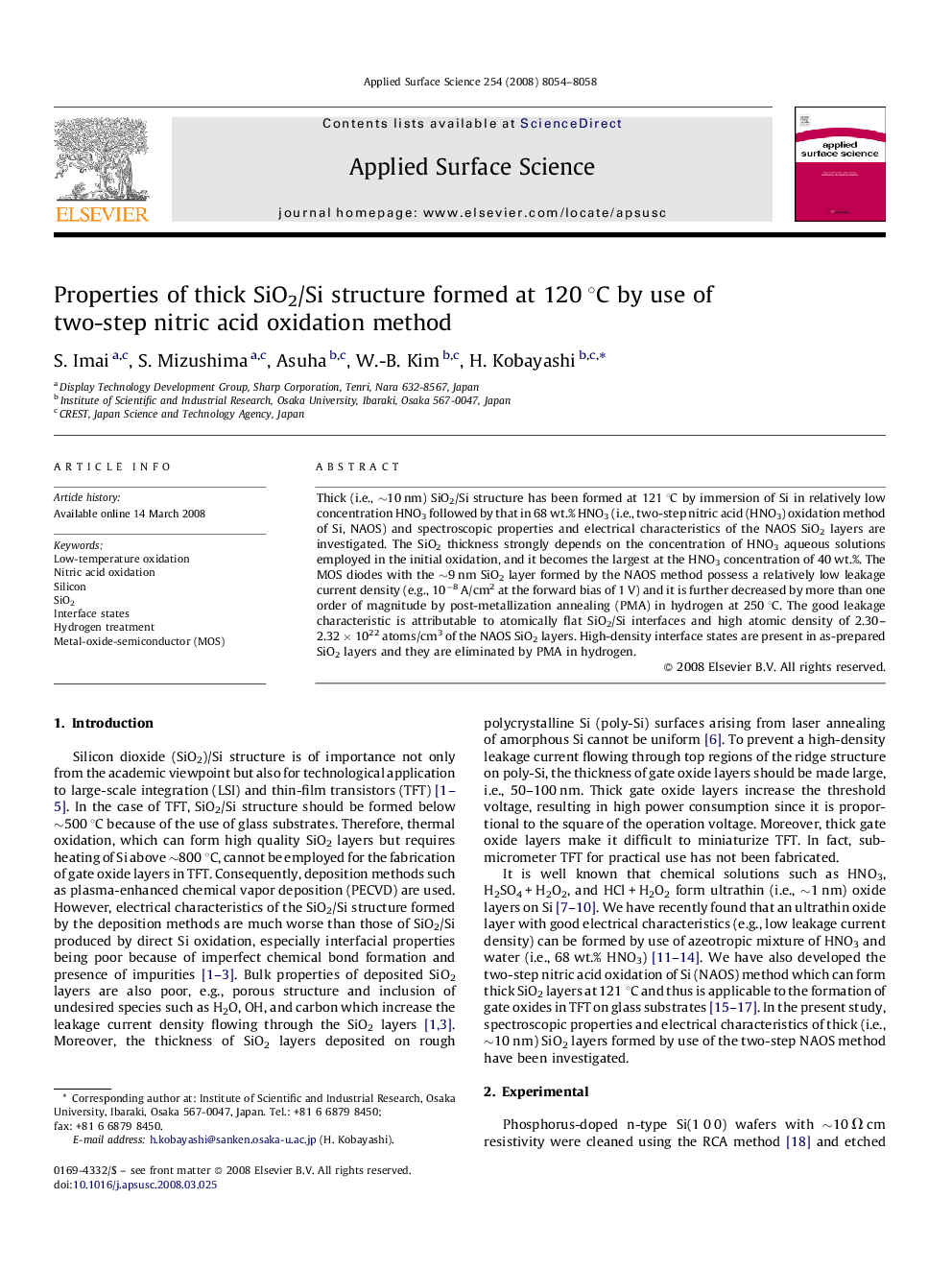| Article ID | Journal | Published Year | Pages | File Type |
|---|---|---|---|---|
| 5365667 | Applied Surface Science | 2008 | 5 Pages |
Thick (i.e., â¼10 nm) SiO2/Si structure has been formed at 121 °C by immersion of Si in relatively low concentration HNO3 followed by that in 68 wt.% HNO3 (i.e., two-step nitric acid (HNO3) oxidation method of Si, NAOS) and spectroscopic properties and electrical characteristics of the NAOS SiO2 layers are investigated. The SiO2 thickness strongly depends on the concentration of HNO3 aqueous solutions employed in the initial oxidation, and it becomes the largest at the HNO3 concentration of 40 wt.%. The MOS diodes with the â¼9 nm SiO2 layer formed by the NAOS method possess a relatively low leakage current density (e.g., 10â8 A/cm2 at the forward bias of 1 V) and it is further decreased by more than one order of magnitude by post-metallization annealing (PMA) in hydrogen at 250 °C. The good leakage characteristic is attributable to atomically flat SiO2/Si interfaces and high atomic density of 2.30-2.32 Ã 1022 atoms/cm3 of the NAOS SiO2 layers. High-density interface states are present in as-prepared SiO2 layers and they are eliminated by PMA in hydrogen.
